Abstract
A novel C35 terpene and its monounsaturated analogue were isolated from cultures of Acetobacter xylinum, together with traces of their C36 homologues. These substances were found to be hopane derivatives substituted by a five-carbon chain bearing four vicinal hydroxyl groups. For the parent hydrocarbon the term bacteriohopane is proposed. The elucidation of the structures utilized high-resolution mass spectrometry of the terpenes, degradation to C32 hydrocarbons and detailed mass-spectrometric comparison of these with C32 hydrocarbons synthesized from known pentacyclic triterpenes. High-resolution mass-spectral data of the terpenes are presented. N.m.r. data are in agreement with the proposed structures, which are further supported by the isolation from the same organism of 22-hydroxyhopane and derivative hopene(s).
Full text
PDF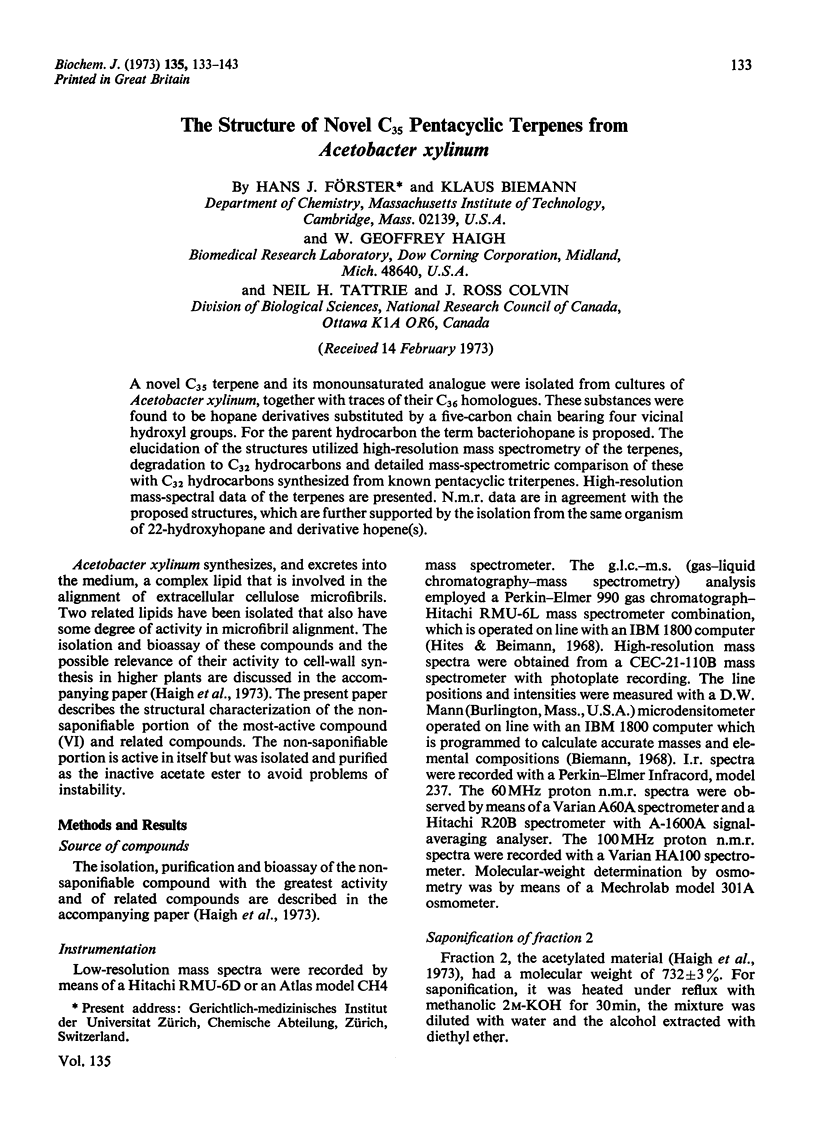
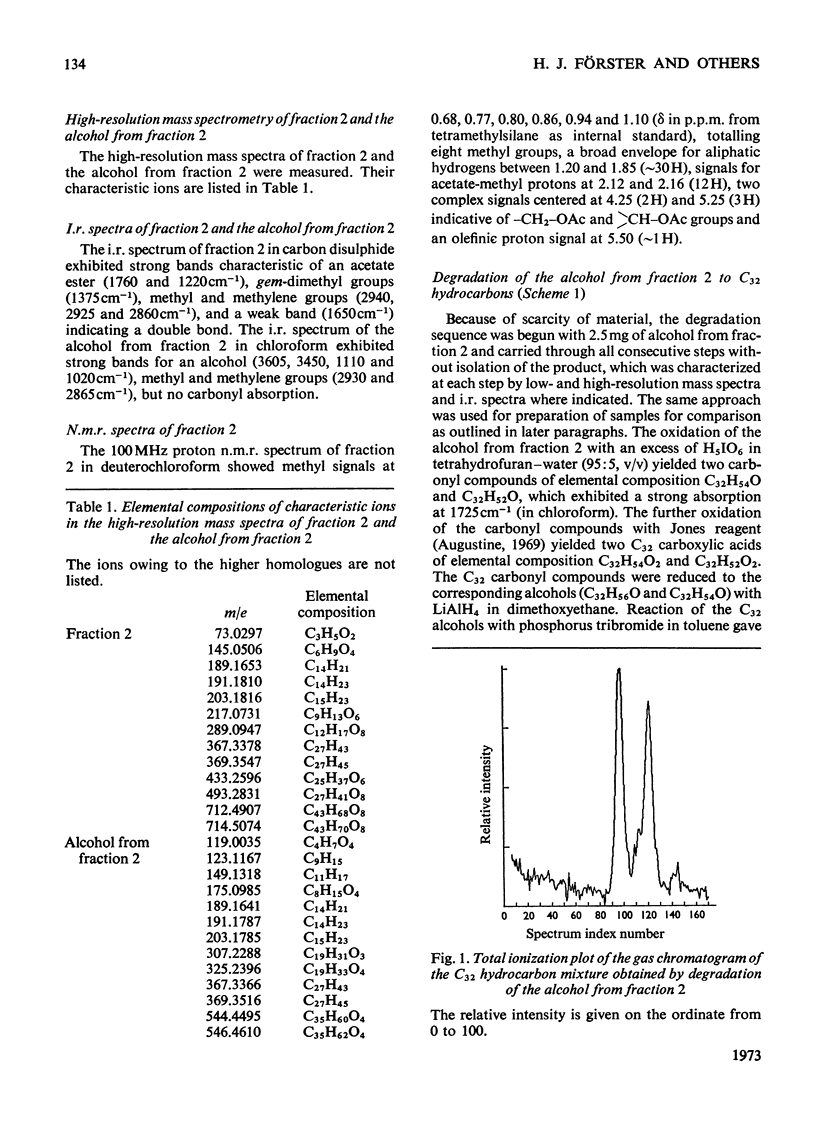
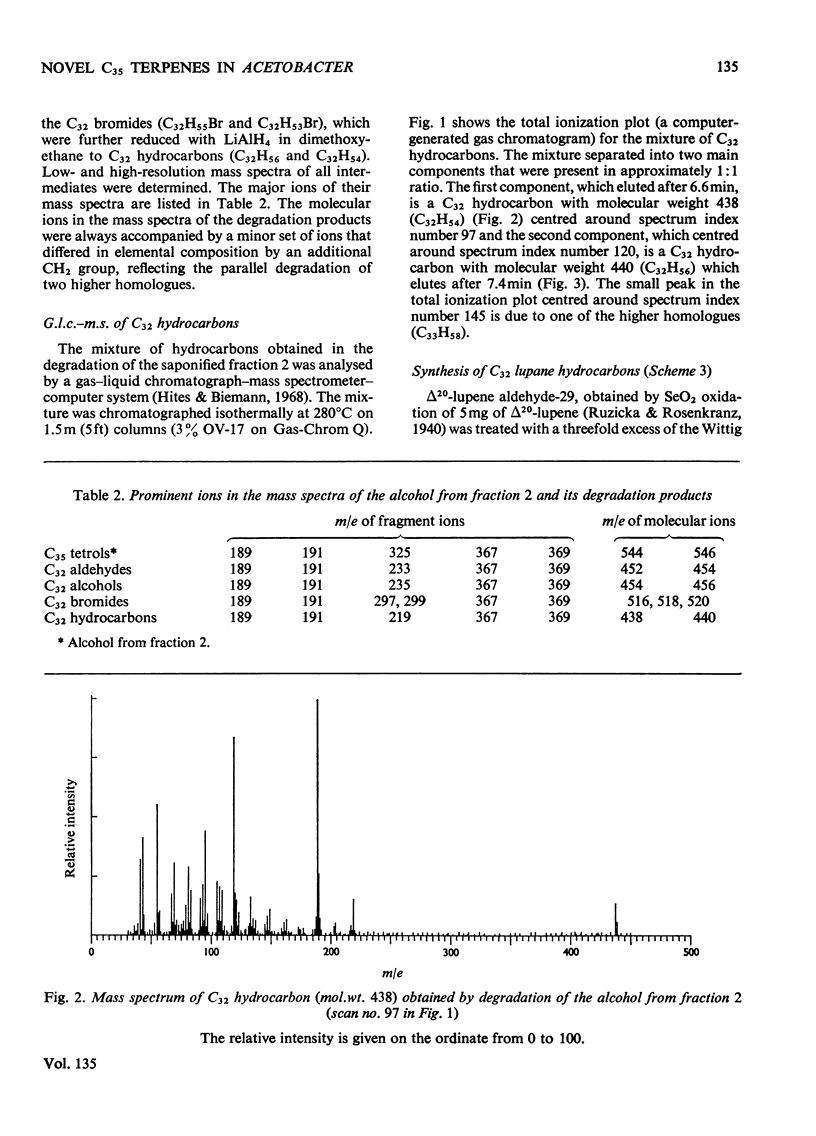
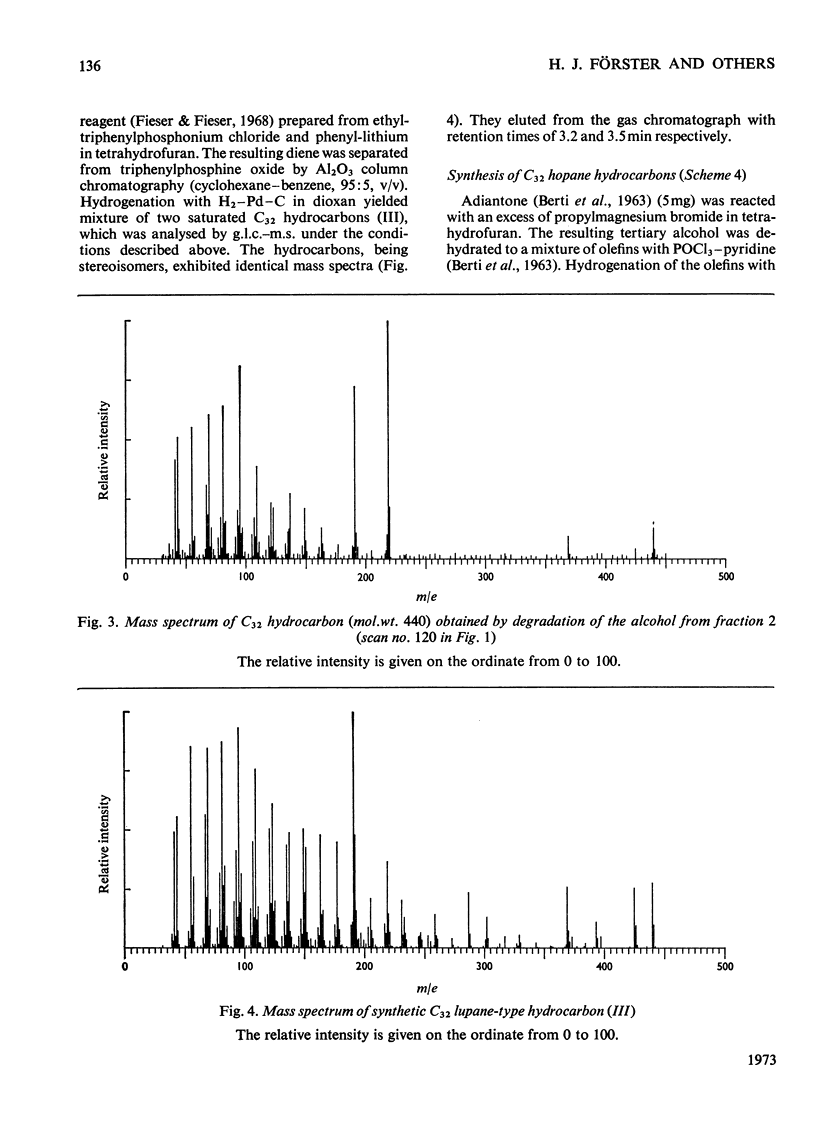
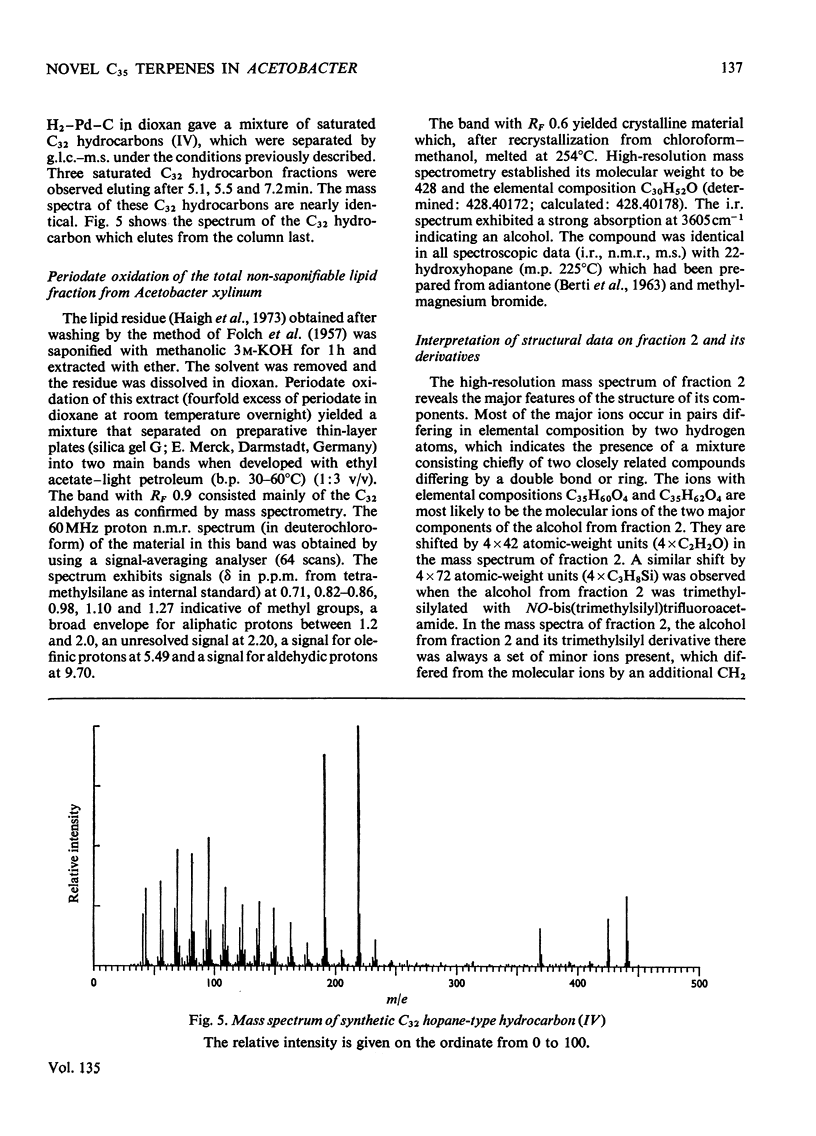
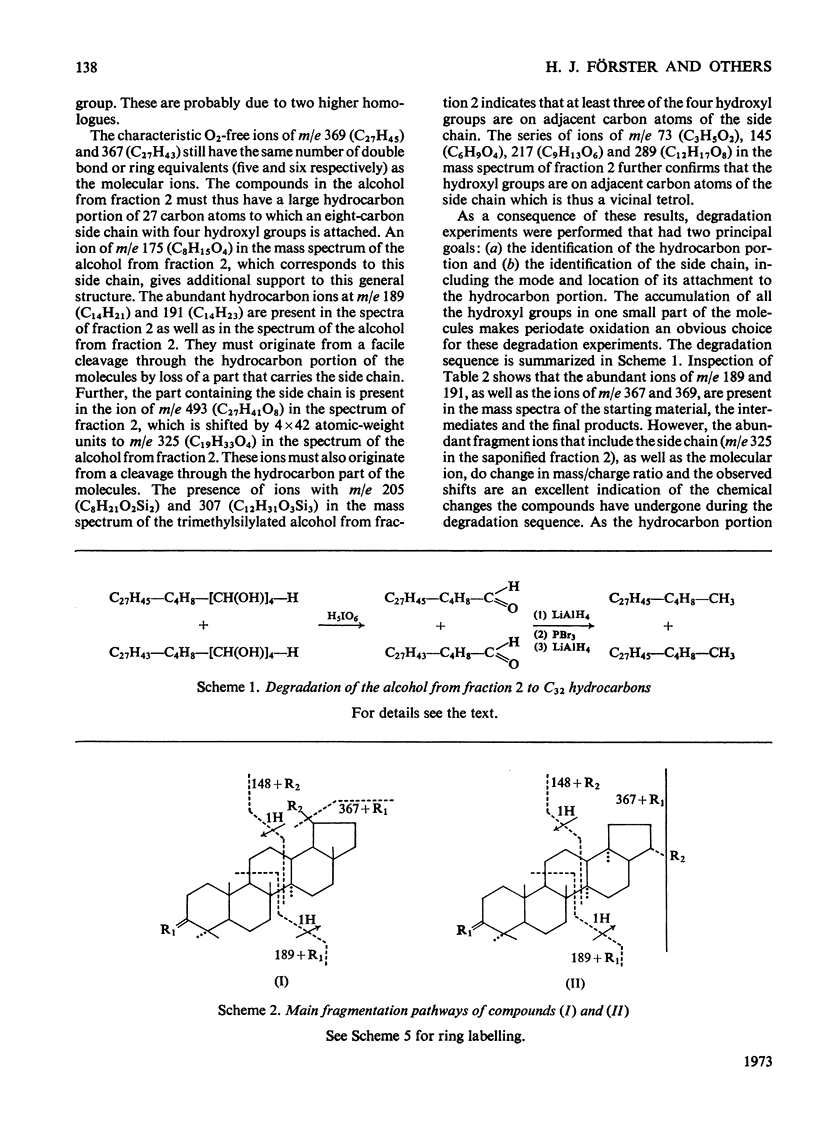
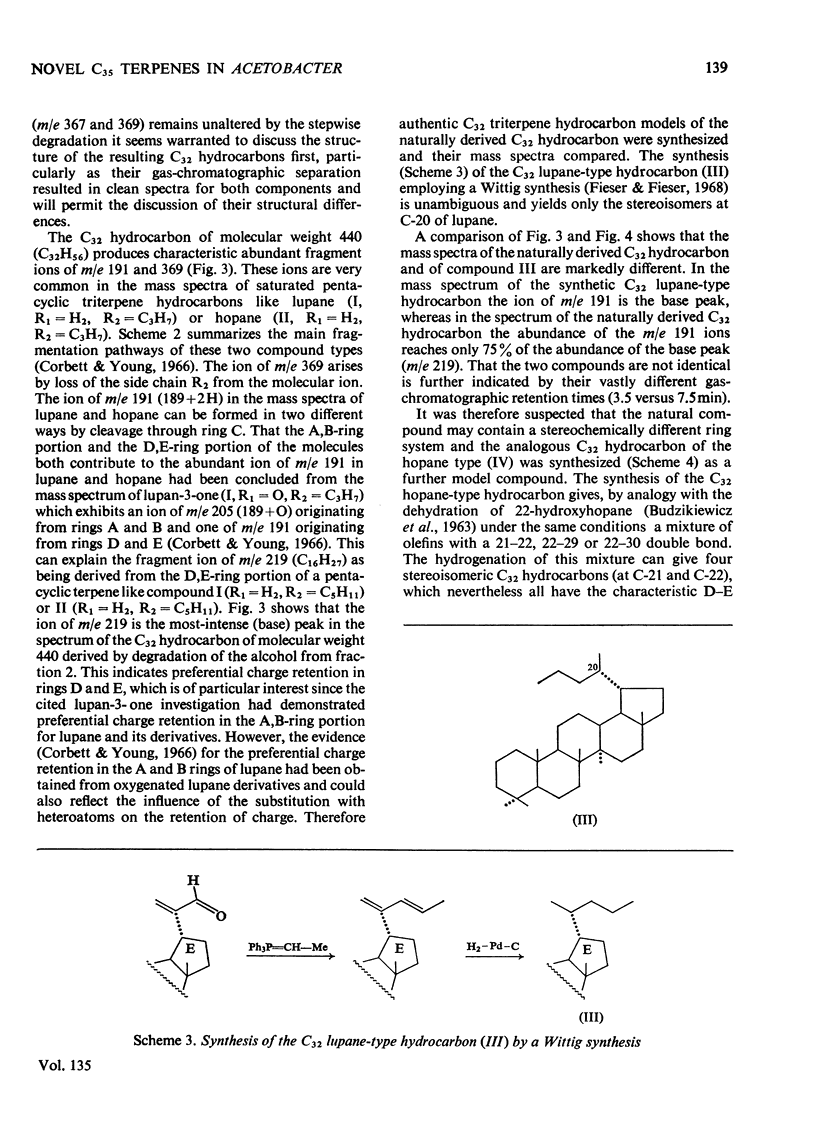
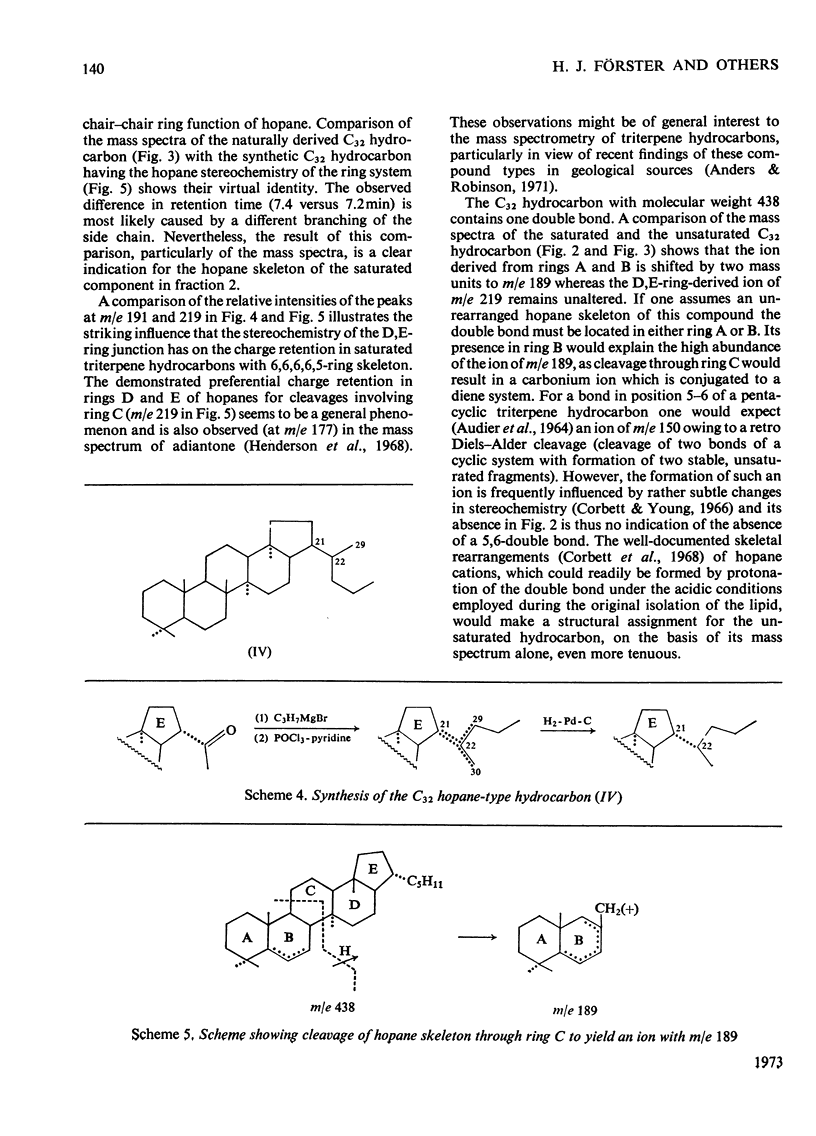
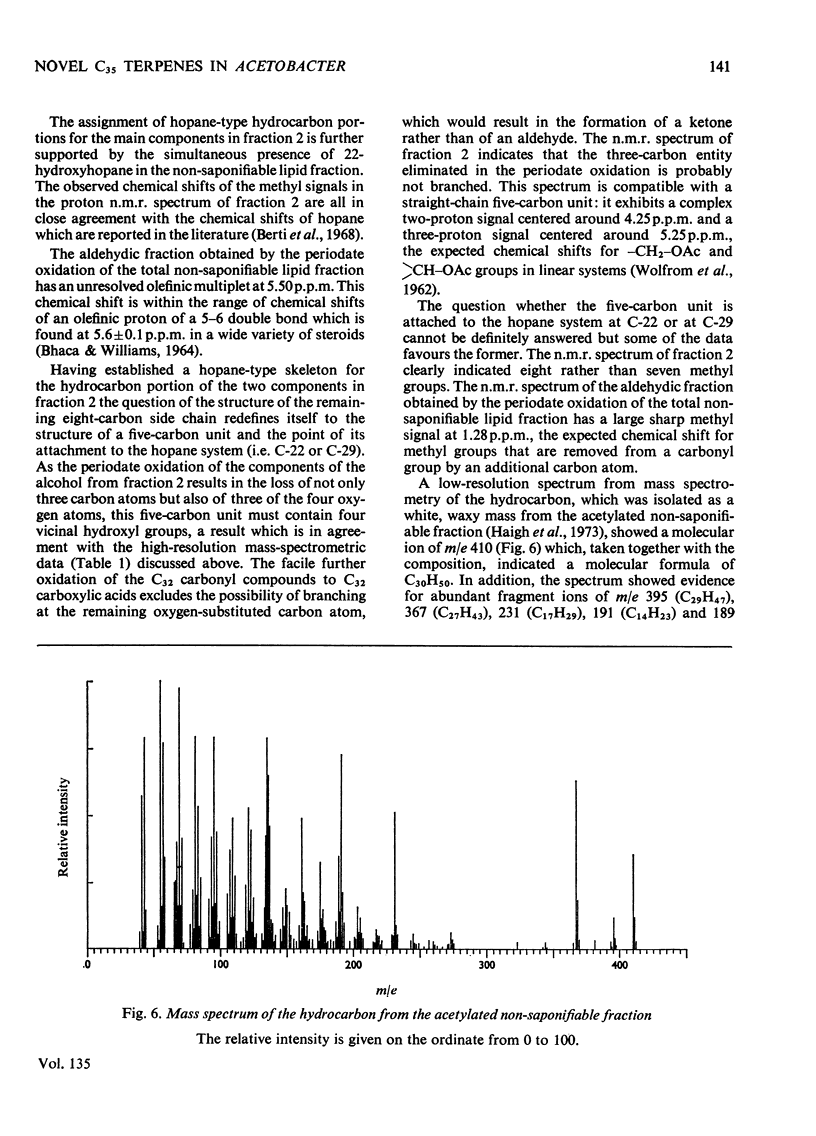
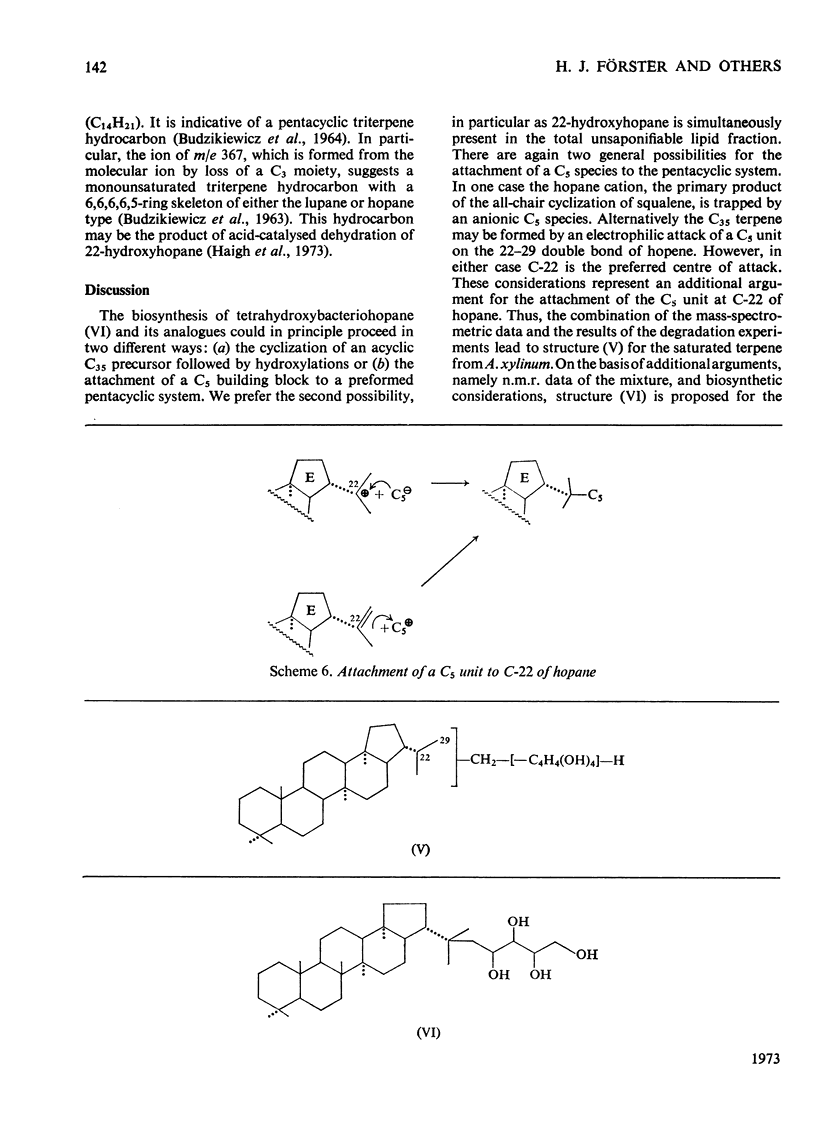
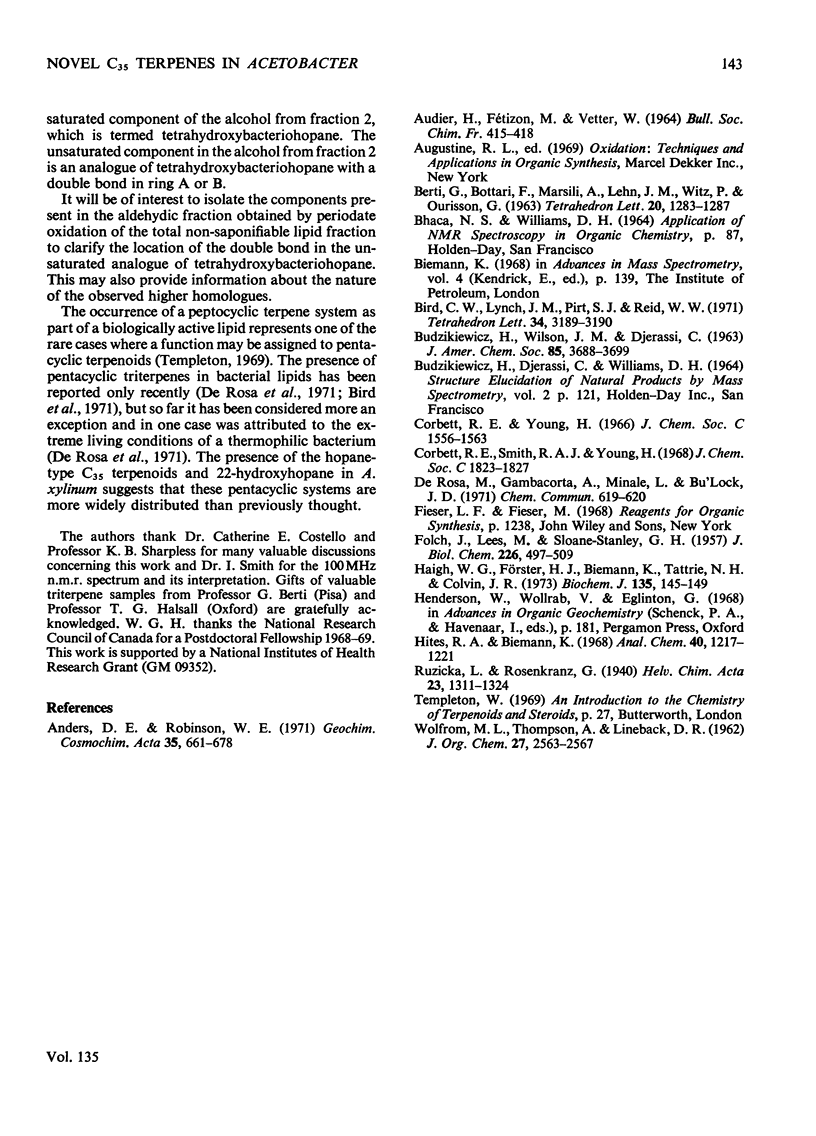
Selected References
These references are in PubMed. This may not be the complete list of references from this article.
- FOLCH J., LEES M., SLOANE STANLEY G. H. A simple method for the isolation and purification of total lipides from animal tissues. J Biol Chem. 1957 May;226(1):497–509. [PubMed] [Google Scholar]
- Haigh W. G., Förster H. J., Biemann K., Tattrie N. H., Colvin J. R. Induction of orientation of bacterial cellulose microfibrils by a novel terpenoid from Acetobacter xylinum. Biochem J. 1973 Sep;135(1):145–149. doi: 10.1042/bj1350145. [DOI] [PMC free article] [PubMed] [Google Scholar]


